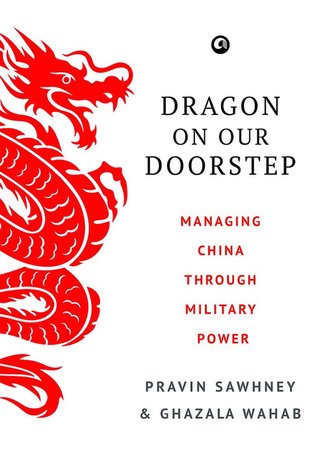Kindle Notes & Highlights
Read between
April 24 - May 17, 2020
Pakistan has built military power, India focused on building military force. In this difference lies the capability to win wars. Military force involves the mere collection of ‘war-withal’, that is building up of troops and war-waging materiel; military power is about optimal utilization of military force. It
India’s overall war effort showed numerous shortcomings: poor strategic and operational intelligence, indecisive higher defence organization, reactive thinking, inability to exploit operational opportunities, lack of directive style of command (where junior leadership is allowed to take the initiative), and little agreement between the army and the air force. All these weaknesses exist even today with each defence service having its own doctrine and ideas about how to defend territory.
the strategic level, China has at least six advantages over Indian defence services. The first is good and quick decision-making, with enormous flexibility before and during a war. This has been made possible by close politico-military interaction and the PLA’s deliberate and proactive thinking as a non-status quo power.
The PLA’s second advantage over India is the possession of tactical nuclear weapons. While China has a no-first-use nuclear policy and considers strategic nukes as political weapons, non-possession of tactical nuclear weapons will continue to deprive India of an appropriate level of deterrence against China.
The PLA’s third advantage over Indian forces is in strategic sustenance or the ability to fight a high tempo (speed of operations) war with optimal wherewithal for a long duration.
Outer space is another area where the PLA is strides ahead of India. China demonstrated its anti-satellite capability first in 2007 by destroying its own legacy satellite with a land-based interceptor.
The PLA’s fifth advantage is potent cyber warfare capabilities, something that India, still grappling with cyber-defence know-how, lacks.
The PLA’s sixth strategic advantage lies in the blurring of India’s two military lines—the Line of Actual Control with China and the Line of Control with POK, which followed China’s annulment of its border with India in Ladakh.
seven reasons why the PLA will remain unmatched and far superior at this level of war.
The most important reason is the PLA’s excellent border management. It has good rail lines and roads (and overall infrastructure) right up to the LAC.
There is unity of command between the PLAA and the border guards (Militia)—the latter is commanded by regular PLAA officers.
The second PLA advantage is the war theatre itself. The Tibet Autonomous Region, a single PLA theatre with complete unity of command, faces four Indian Army commands and two Indian Air Force commands on the disputed border.
the terrain favours the PLA.
PLA’s twin operational advantages are its Special Forces (each service has its own units skilled to do what they should: operate behind enemy lines) and impressive airlift capabilities.
The PLA’s fifth advantage is its conventionally armed ballistic and cruise missiles.
The sixth advantage of the PLA is its mobile forces.
The seventh advantage is unmanned aerial vehicles


